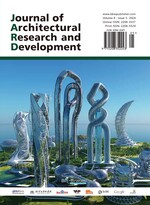Abstract
This paper discusses the digital application of building information model (BIM) technology in the architectural design stage. Taking the large-scale comprehensive development project of Guangxi headquarters base as an example, this paper analyzes in detail how BIM technology promotes the intelligence and refinement of the design process. Through the three-dimensional modeling and simulation analysis of BIM technology, the project design has realized the accurate transformation from concept to operation, which not only improves the design efficiency, but also ensures the construction quality and economic benefits. This paper focuses on the application of BIM in the digital design of building structure, the deepening design of steel nodes, as well as the remarkable results in the comprehensive layout optimization of mechanical and electrical pipelines. Through the collision detection and optimization design of the BIM model, the potential design conflicts and construction problems were found and solved at the initial stage of the project, ensuring the efficient promotion and smooth implementation of the project. The research results show that BIM technology, as the core digital tool in the architectural design stage, is of great significance for improving the overall design level of the construction industry and realizing intelligent construction.
References
Zhang Q, 2024, Urban Design Control Guidance Study based on Wind Environment Improvement. Theoretical Research on Urban Construction (Electronic Version), 2024(22): 28–31.
Xu M, 2024, Problems and Coping Strategies Existing in the Structural Design of High-Rise Buildings. Technology and Innovation, 2024(13): 137–139.
Jiang W, 2024, Research on Wind Load and Dynamic Response of High-Rise Buildings. Brick and Tile, 2024(05): 68–70 + 74.
Yang J, Zhan H, Chen L, 2022, Emergency Evacuation Route Planning in Densely Populated Urban Areas Considering Earthquake Disasters. Journal of Tsinghua University (Natural Science Edition), 62(1): 70–76.
Li X, Wang C, Kassem MA, et al., 2024, Emergency Evacuation of Urban Underground Commercial Street Based on BIM Approach. Ain Shams Engineering Journal, 15(4): 102633. https://doi.org/10.1016/j.asej.2024.102633
